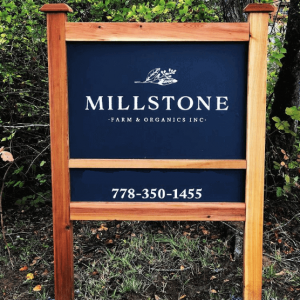Top Ten Challenges Facing the Gluten-Free Community
 In February 2021, Good For You Gluten Free surveyed 1,000 people following a gluten-free diet to better understand their daily challenges. Below is a summary and analysis of the key results.
In February 2021, Good For You Gluten Free surveyed 1,000 people following a gluten-free diet to better understand their daily challenges. Below is a summary and analysis of the key results.
- Challenges Facing the Gluten-Free Community Survey Results & Analysis, goodforyouglutenfree.com 1
- NOTE: This survey is for informational and entertainment purposes only. All analysis, interpretations, and opinions expressed are of the sole opinion of Good For You Gluten Free and should not be construed as medical advice. Please discuss any information and opinions expressed in this report with your doctor.
1. OVERVIEW
Celiac disease is a well-researched genetic disorder that impacts approximately 1% of the population. Non-celiac gluten sensitivity, a lesser-understood disorder, impacts 6% of the population. i
The only treatment option for both gluten disorders is a strict, gluten-free diet, which, as this report indicates, can be difficult and burdensome for someone to follow.
The report finds that the vast majority of the gluten-free community is most challenged by eating out safely, although a good number of people also find it challenging to eat safely in the confines of their own homes and kitchens.
This report also highlights that the gluten-free community isn’t always fully compliant when it comes to following a strict, gluten-free diet, and demonstrates that many gluten-challenged people are willing to take risks with their diet and their health.
2. DEMOGRAPHICS
Of the 1,000 respondents:
- 53.3% indicated they have celiac disease
- 29.2% have non-celiac gluten sensitivity (also known as gluten intolerance)
- 17.5% indicated they follow a gluten-free diet for another reason.
The vast majority of respondents are from the
- U.S. (89.4%)
- Canada (6.1%), UK (1.5%)
- (3%)
When asked how long the respondent has followed a gluten-free diet
- 14.9% say less than one year
- 20.3% say 1-2 years, 22.1% say 3-4 years
- 25% say 5-10 years
- 17.7% say they have been gluten free for more than 10 years.
3. SURVEY RESULTS & ANALYSIS
Top Challenges Faced by the Gluten-Free Community
Respondents were asked to rank each of the following challenges using a 4-point scale
1 = not challenging at all, 2 = somewhat challenging, 3 = very challenging, and 4 = extremely challenging
• Cooking at home
• Eating in a home / kitchen shared with gluten eaters
• Eating out safely
• Feeling emotional or anxious about food
• Finding GF alternatives to favorite foods
• Maintaining a healthy weight
• Planning meals for the week
• Reading / Interpreting food labels
• Struggles with health / feeling healthy
• The high-cost of gluten-free foods
The “challenges” were presented to survey participants in random order. We noted how many respondents ranked a challenge as either “extremely” or “very” challenging, tallied that number, then ranked their responses from most to least challenging:
1. Eating Out Safely = 84.6% (most challenging)
2. The High Cost of Gluten-Free Food = 71%
3. Feeling Emotional or Anxious about Food = 55.2%
4. Finding Alternatives to GF Foods = 55%
5. Maintaining a Healthy Weight = 52.8%
6. Struggles with Health / Feeling Well = 50.8%
7. Reading / Interpreting Food Labels = 46.5%
8. Planning Meals for the Week = 38%
9. Eating in a Home / Kitchen Shared with Gluten Eaters = 36.2%
10. Cooking at Home = 16.1% (least challenging)
- Eating out safely is the top challenge affecting those following a gluten-free diet today with 84.6% of respondents indicating eating out safely as “very” or “extremely” challenging. This number is high, likely due to the inherent risks involved with eating at a restaurant.
While eating at a restaurant is a normal human behavior, and much of a person’s social life (dating, celebrations, events, etc.) revolves around eating out, restaurants continue to pose one of the highest risks of gluten cross contamination. This risk is prevalent even when a restaurant advertises that it offers gluten-free options! In fact, a 2019 study found that 32 percent of restaurant dishes indicated as “gluten free” actually contained measurable amounts of gluten.ii It’s no surprise that this survey finds that nearly 79% of respondents prepare the majority of their meals at home vs. at a restaurant.
The next biggest challenge faced by the gluten-free community is the high cost of gluten-free food. While it’s important to note that the cost of gluten-free foods has decreased over the years, likely due to increased availability, increased demand, and the rise in mass-market production of gluten-free foods, gluten-free foods still cost 183% more, on average, than regular foods. iii
Furthermore, this survey illustrates that there is a high emotional burden to the gluten-free diet. More than half of the gluten-free community expressed that they feel “emotional” or “anxious” about food. While this number is worrisome, it’s not surprising. One study found depression rates to be higher for people following a gluten-free diet than the general population. iv
Another study found that even among individuals managing their gluten disorder “very well”, those individuals still reported higher rates of stress, depression and body dissatisfaction when compared to the general population.v
Risks the Gluten-Free Community are Willing to Take
We set out to understand the gluten-free community’s attitudes and behaviors toward following and maintaining their gluten-free diets.
- In this survey, 77.9% respondents describe their gluten-free diet as “very strict”, yet, this statistic is contradicted by the fact that 43.9% of overall respondents say they “would” or “maybe would” eat a food item that they know came in contact with gluten (i.e. a gluten-free food that was cooked in a fryer that was also used to cook non-GF foods).
We examined the data to see how respondents with celiac disease answered this question in comparison to the non-celiac community.
- We found that people with celiac disease are less likely to take such a risk, as only 25% of celiac respondents say they “would” or “maybe would” eat something that may have come in contact with gluten vs. 43.9% of overall respondents.
This demonstrates a few important points.
First, it highlights that the celiac disease segment of the gluten-free population is taking their diet more seriously than the non-celiac community. This may be because someone with celiac disease has a diagnosis that is widely accepted, acknowledged, and credible among the medical community, whereas people with non-celiac gluten sensitivity do not. This information should serve as an urgent wake up call for more research centered on understanding, classifying, and diagnosing non-celiac gluten disorders.
Second, knowing that a diagnosis can raise one’s gluten-free diet compliance rate, the medical community should encourage celiac disease testing as soon as a patient presents either classical (i.e. bloating, gas, diarrhea) or non-classical symptoms (short stature, nutritional deficiencies, osteoporosis, skin disorders, etc.) and without delay. Unfortunately, the average time from symptom onset to celiac disease diagnosis is 11 years.vi
Third, a large percentage of the gluten-free community have initiated a gluten-free diet before ruling out celiac disease. This means many individuals don’t know if they have celiac disease and mistakenly believe they have non-celiac gluten sensitivity. As this survey shows, many non-celiac sufferers may not comply as strictly with the gluten-free diet as a result. Should an individual want to be tested for celiac disease after initiating a gluten-free diet, they would have to go back to eating gluten again in order to get an accurate celiac disease test. (This is known as The Gluten Challenge). People who feel better after removing gluten from their diets would likely be hesitant to reintroduce a food (gluten) that would cause their symptoms to re-emerge.
Finally, the fact that 25% of people with celiac disease say they “would” or “maybe would” eat something that may have come in contact with gluten show the deep burden experienced by the celiac disease community. The desire to eat out and fit in at social occasions is strong.
Creating a Gluten-Free Safe Space
More than one-third (36.2%) of respondents say they find it challenging to share their home / kitchen with gluten eaters. This number is significant as it represents that a large number of people following the gluten-free diet may not feel safe even eating in their own homes.
However, we found that 36% of people on a gluten-free diet maintain a dedicated gluten-free home / kitchen. Given the emotional burden of the gluten-free diet, along with the challenges the community faces eating out safely, there is an opportunity within the community to encourage more people to maintain dedicated gluten-free homes. Having a home free of gluten, and the potential threat of gluten cross contamination, may not only help improve diet compliance, but also may lesson one’s level of food anxiety.
Is the Gluten-Free Community Supported by their Doctors?
One of the challenges often lamented by the gluten-free community is that their doctor lacks understanding and knowledge of gluten disorders. We asked the gluten-free community how supported they feel by their primary care doctor and how knowledgeable they feel their doctor is when it comes to gluten disorders.
Sixty-six percent (66%) of the respondents say they feel their primary care doctor is “well versed” or “somewhat versed” in gluten disorders, while 34% say they feel their primary care doctor “knows very little about gluten disorders” and “was not helpful”.
Knowing that approximately one-third of the gluten-free community doesn’t feel supported by their primary care doctor is concerning, no doubt, and we hope this data will encourage doctors to take a more vested interest in understanding all gluten disorders and the serious health threat these disorders pose to their patients.
4. NOTES & DISCLAIMERS
This survey was distributed via the AYTM tool to the gluten-free community via the Good For You Gluten Free newsletter and social media sites. Only answers submitted
by those following a gluten-free diet were included in the final analysis.
This survey is for informational and entertainment purposes only. All analysis, interpretations, and opinions expressed are of the sole opinion of Good For You Gluten
Free and should not be construed as medical advice. Please discuss any information and opinions expressed in this report with your doctor.
Good For You Gluten Free is a website dedicated to sharing information, recipes, restaurant reviews and product finds with the gluten-free community. Please consult
your doctor about health concerns or changes to your diet.
- i Igbinedion SO, Ansari J, Vasikaran A, et al. Non-celiac gluten sensitivity: All wheat attack is not celiac. World J
Gastroenterol. 2017;23(40):7201-7210. doi:10.3748/wjg.v23.i40.7201 - ii Lerner BA, Phan Vo LT, Yates S, Rundle AG, Green PHR, Lebwohl B. Detection of Gluten in Gluten-Free Labeled
Restaurant Food: Analysis of Crowd-Sourced Data. Am J Gastroenterol. 2019 May;114(5):792-797. doi:
10.14309/ajg.0000000000000202. PMID: 30920417; PMCID: PMC6502671. - iii Lee AR, Wolf RL, Lebwohl B, Ciaccio EJ, Green PHR. Persistent Economic Burden of the Gluten Free Diet.
Nutrients. 2019 Feb 14;11(2):399. doi: 10.3390/nu11020399. PMID: 30769836; PMCID: PMC6412592. - iv Häuser W, Janke KH, Klump B, Gregor M, Hinz A. Anxiety and depression in adult patients with celiac disease on a
gluten-free diet. World J Gastroenterol. 2010;16(22):2780-2787. doi:10.3748/wjg.v16.i22.2780 - v Penn State. “Women with celiac disease suffer from depression, disordered eating, study finds.” ScienceDaily.
ScienceDaily, 27 December 2011. <www.sciencedaily.com/releases/2011/12/111227093059.htm>. - vi “Top 5 myths about celiac disease,” ACP Internist 13 April 2019.
- 1 https://www.goodforyouglutenfree.com/wp-content/uploads/2021/04/Challenges-Facing-the-Gluten-REPORT-2021.pdf
- © Good For You Gluten Free (2021)













